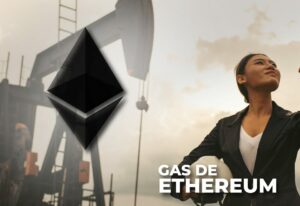
Table of Contents
ToggleDid you know that you can explore the blockchain? One tool you can use to do so is Etherscan. In this article we’ll tell you all about what it is and how it works. If you are a user of the Ethereum network and you do more than store Ether or send and receive transactions, you might want to learn how to navigate the blockchain. In that case, you should be very interested in learning how to use this tool.
Etherscan is one of the most popular options to learn how to use the basic functions of the blockchain. With this tool we can make use of most of the functions without having to connect our wallet or register. In this article we will see all its use cases and what information we can get through this explorer.
What does Etherscan offer?
Etherscan is a block explorer that allows users to synthesize public data of transactions made on the Ethereum blockchain. In addition, we can view smart contracts and public addresses. In the Ethereum network all transactions and movements are public, so Etherscan is responsible for functioning as a search engine that helps users find the information they need.
For example, with a hash we can verify all activity related to this transaction even if it includes smart contracts, tokens or whatever. For this we don’t have to register, but if a user wants to make use of some additional functions it may be necessary to create an account. Some of these extra functions can be to create alerts of incoming transactions, access to development tools and we can create data feeds.
It should be noted that Etherscan does not offer an Ethereum wallet to store our passwords and we cannot trade with it either. Etherscan functions solely and exclusively as an Ethereum blockchain reporting tool and as a smart contract database.
Today Etherscan is one of the most reliable blockchain explorers on the Ethereum network. It offers us the possibility to check the information on the blockchain, to gain knowledge on how to interact with the blockchain, it can help us to understand the functioning of decentralized applications and their transactions. In addition, this explorer can also help us in case of witnessing suspicious activities on the blockchain.
One of the functions that we can implement with Etherscan is, for example, a whale movement alert that will let us know when large amounts are moved on the blockchain. We can also see the movements of tokens in a given project and thus detect scams or rug pulls where developers sell all the coins in a project and abandon it.

How does Etherscan work?
This tool has multiple functions. In this section we will see each of them and how to use them. One of the main functions of Etherscan is to search for a transaction or wallet. Transaction tracking is easy to understand.
Let’s imagine that we have just sent 0.30 ETH to the public address 0x357bbcb458729d48c6f57a621e59c66eff876b5a. Clearly, in addition to the sending we have paid a transaction fee of 0.0012332 ETH. Once the transaction is done our wallet will show us the hash 0x65a3cc0f546787b3de745b2f1efbe8d38d4f348e95b345c8a840ebf944714fa9. Now, let’s imagine that we want to verify the number of confirmations that our transaction has had and in this way to know if it has been carried out correctly. To do this, we must first go to the Etherscan home page and go to the search field at the top of the page.
In that space we paste the Hash of the transaction that would be 0x65a3cc0f546787b3de745b2f1efbe8d38d4f348e95b345c8a840ebf944714fa9 and then click on the search button. Once we have completed these simple steps we will be able to see all the details of the transaction we have made in particular. We will see that it gives us the option to “see more“. If we hit that button we will be able to see other details such as the hash of the transaction, the status, the block, the timestamp, the wallet from which the transaction was made and the wallet to which it was sent, the value of the transaction, the commission paid, the price of the gas and the type of TXN.
With this data it will be very easy to verify the status of the transaction. However, if we still want to investigate further, we can perform the same process with the receiving address and view all transactions associated with that address.

How to search for smart contracts in Etherscan?
If you are a user who constantly interacts with smart contracts in Decentralized Applications you should know that Etherscan is also a good tool to inspect them. This way you can verify that your funds are sent to the right smart contract.
Let’s say you need to send tokens to your wallet and you want to find the contract address of the token. Smart contract addresses have token logic that includes how transfers are made, among other components. The first step is to find the address of the token in question. This address can be found on the project’s official website or at https://etherscan.io/tokens. It is important to make sure that the address is correct. To do so, we recommend verifying it on the official website.
The first step would be to copy and paste the token address into the search field on the Etherscan home page. Once we hit the search button we will see the details of the contract such as the balance or more general information such as the value, the address of the originating contract, etcetera.
As always, we have the “see more” option where the transactions, the smart contract and a comments section are included. If we look at the top we will see the “contract” option. There we can find the options to interact with the contract and the contract rules. In the “view contract” window we will find the general information of the contract. This space allows us to access options such as consulting the balance of specific wallets that allow us to use that token.
As we can see, this is a very complete tool to explore the Ethereum blockchain. In addition to the functions detailed above we can check gas prices on the network, find Airdrops and endless options. Do you dare to use it?



